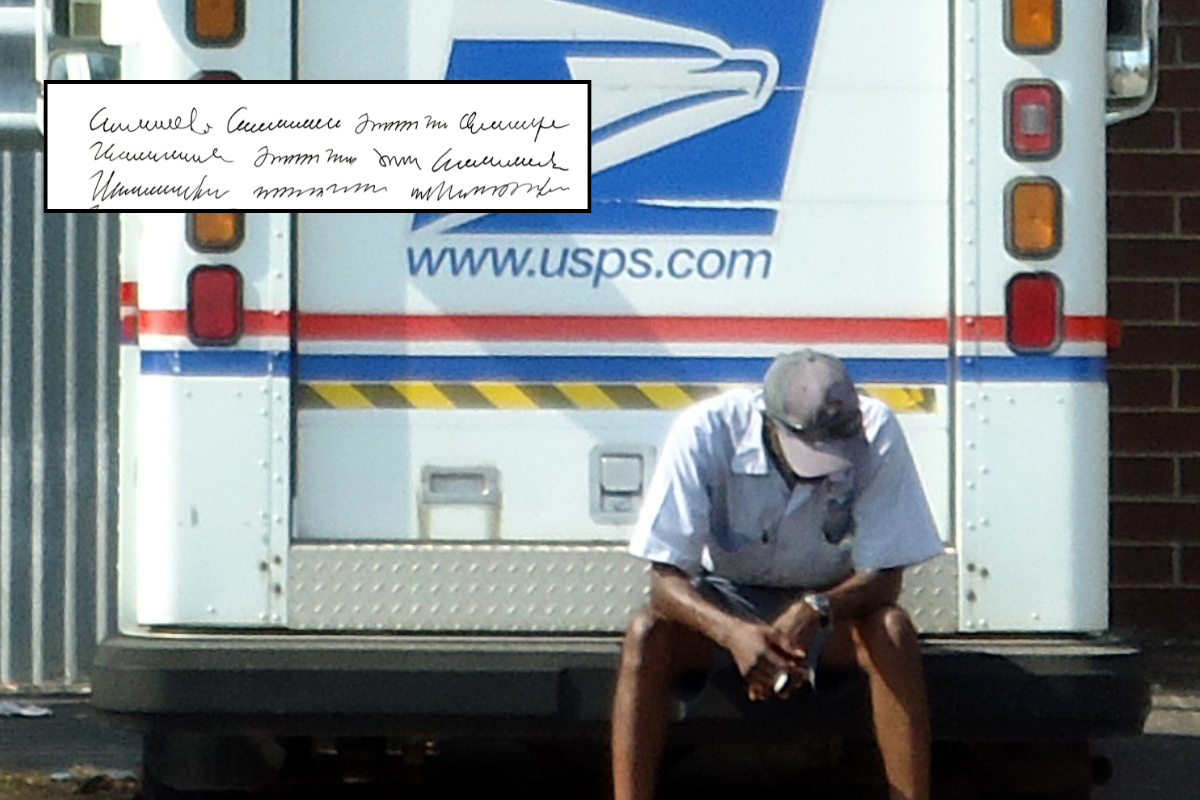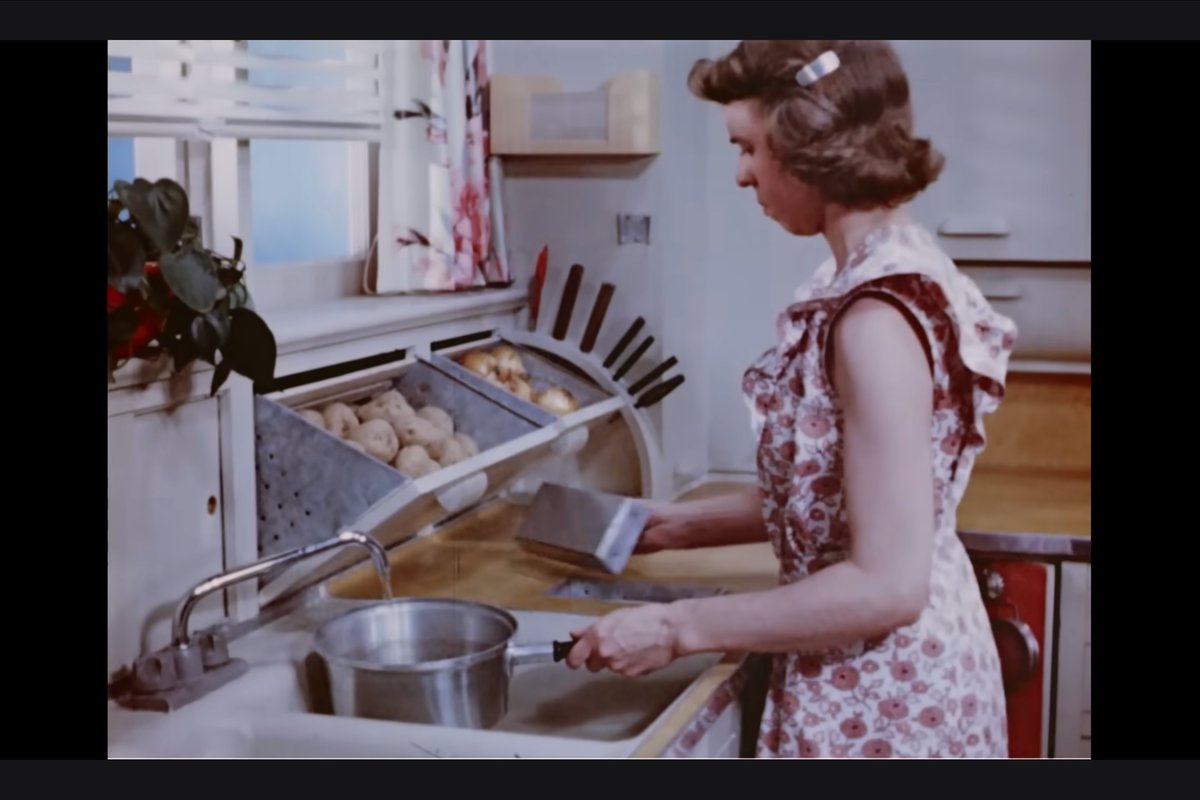No one appreciates the U.S. Postal Service anymore.
Sure, the Pony Express was cool for that year and a half it existed, the Trystero mail service was fun in that book I read that one time, and UPS and FedEx both clearly have their places in the world. But the United States Postal Service is where it's at.
And if you're feeling cynical about having to wait in line sometimes (which, dude, I know, totally sucks), here are five delightfully wacky facts about USPS that will make you appreciate those intrepid parcel warriors in ways you never thought you could.
Photo by William Thomas Cain/Stringer/Getty Images.
1. A dog used to be the official mascot of the USPS ... and its taxidermied body is still on display.
Owney was a stray border terrier who was adopted by the Albany Post Office in 1888. The friendly pup had an affinity for mailbags and used to crawl inside to nap ... and get carried away with the mailbag to wherever it went next.
The other post offices soon took a liking to the nomadic pup and always knew where to send him home. Owney gained a reputation as a good luck charm on rail trips and was named "Official Mascot of the Rail Mail Service" by then-Postmaster General John Wanamaker.
Sadly, Owney died in 1897, but his stuffed body is still on display at the Smithsonian National Postal Museum. Maybe that'll get your dog to stop barking at every postal worker who goes by?
Thumbnail photo by Smithsonian Institution/Flickr.
2. Speaking of animals, it's entirely legal to ship live scorpions through the USPS.
Sure, FedEx and UPS will let you send some hooch to a friend. But neither one of them will deliver a literal box of scorpions right to the doorstep of your enemy.
Did I say enemy? I meant laboratory. The shipment of live scorpions through USPS is strictly limited to "purposes of medical research use or the manufacture of antivenin."
Spiders, however, are still not legally mailable.
Unfortunately, it is not legal to mail the rock band Scorpions — although it is legal for them to rock you like a hurricane. Photo by Scott Harrison/Stinger/Getty Images.
3. It also used to be legal to mail children.
Or, at least, it wasn't explicitly illegal, so long as the child still weighed under the parcel limit of 50 pounds. When the parcel system was first introduced in 1913, no one really thought it was something they would have to regulate. But, well, c'mon — traveling with children is tough. Can you really blame a parent for sending their kid to grandma's house via USPS?
Yes, yes you can. That's why it was made illegal less than two years later.
Photo by Smithsonian Institute/Flickr.
4. There's still one mail route that's delivered by mule.
Understandably, it's kind of difficult to drive a mail truck down into the Grand Canyon. And that's why a pack of mules travels down to the bottom of the canyon every day, each one carrying 130 pounds worth of mail, food, and supplies to the Havasupai tribe that lives there. The eight-mile trek has been overseen by the same courier for 21 years — and it even has its own unique mule-themed postmark.
Photo by Elf/Wikimedia Commons.
5. The post office used to be a bank ... and could be again.
Back in 1910, William Howard Taft introduced the U.S. Postal Savings System in an effort to fight back against predatory lending and offer an alternative for people who had lost their trust in banks.
The Postal Savings System offered a guaranteed 2% interest rate; the post office in turn would redeposit that money in local banks, stimulating local economies and keeping whatever additional interest they accrued to cover their own operational costs.
By the end of World War II, U.S. citizens had invested almost $3.4 billion in the Postal Savings System. But as the private banks regained (massive amounts of) power in the postwar boom, they drew the public back to them with higher interest rates and fancy promises, and the Postal Savings System was shuttered in 1967.
And, fortunately, predatory lending and big banks have never, ever, ever caused any problems since then. Right?
Image via U.S. Postal Savings System/Wikimedia Commons.
So what if we brought back the Postal Savings System?
Did you know that 28% of American households — roughly 35 million households — either don't have a bank account or otherwise regularly rely on alternative financial services (like check-cashing services and payday loans)? Did you know that those services could end up costing them a full 10% of their annual income? That's a pretty crucial survival chunk when you're only making $25K a year.
You might know that the post office is massively in debt, but did you also know that USPS receives absolutely no money from U.S. taxes, except for the less than 1% of their budget that comes from the government to cover free postage for blind people and overseas voters?
As it stands, post offices do offer some very limited banking services, such as money orders and U.S. Treasury check cashing. But did you also know that 59% of U.S. post offices operate in zip codes where there is just one bank or no bank at all? And in rural areas in particular, post offices tend to sell 27% more money orders per capita than offices in urban areas.
Are you seeing the connection here?
Photo by Joe Raedle/Getty Images.
A new postal banking system could save significant money for millions of Americans. And also save the USPS itself.
According to an extensive white paper put together by the USPS, those unbanked and underbanked Americans spent a combined total of about $89 billion on interest and fees from alternative financial services in 2012.
But if services like check cashing were available at the post office — a public institution obligated to provide affordable and quality services — it would save money for millions of Americans, while also having the potential to bring in an estimated $8.9 billion in revenue for the USPS itself.
Bernie Sanders and Elizabeth Warren are among the politicians who support the idea. The USPS even has a plan to implement it. So what is Congress waiting for? (Who knows? It's Congress, ugh.)
The USPS has such a fun and fascinating history — and it can provide some amazing things for the American people. I'd say it's worth keeping around.
- An 11-yr-old's daily tic-tac-toe game with her mail carrier is quietly a metaphor for America in 2020 - Upworthy ›
- Of all things, the freaking postal service should not be a partisan fight - Upworthy ›
- People share useless facts that simply won't leave their heads ›
- People share 20 random facts - Upworthy ›
- 15 random fats most people don't know - Upworthy ›



 TikTok · Ale
TikTok · Ale
 Kittens are the cutest.
Kittens are the cutest.  Grrrr, wook at his widdle paws and his widdle whiskers.
Grrrr, wook at his widdle paws and his widdle whiskers. 

 Design 3D GIF
Design 3D GIF 
 Bluebells at the Brooklyn Botanical Gardens.
Bluebells at the Brooklyn Botanical Gardens. 